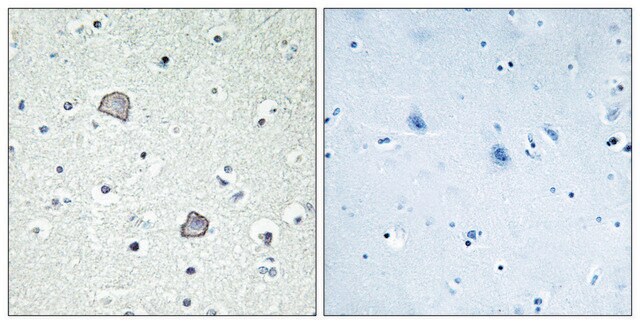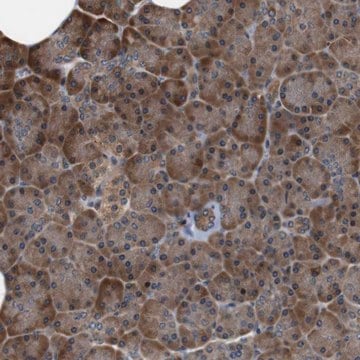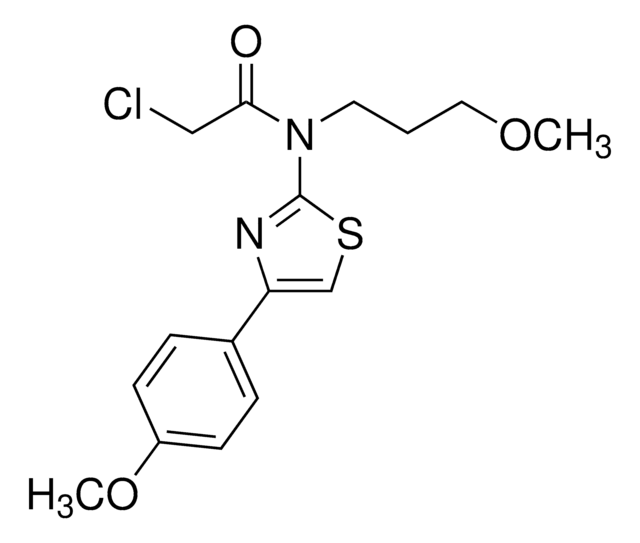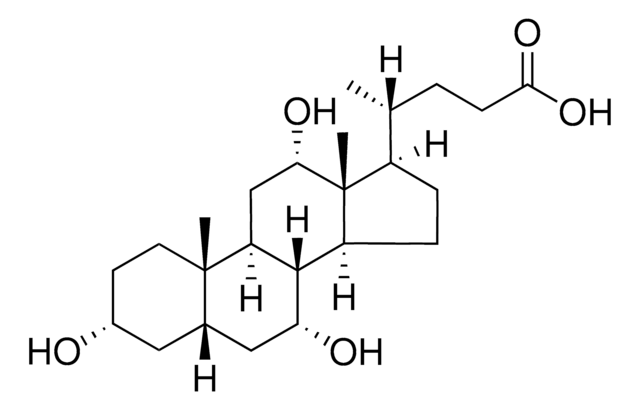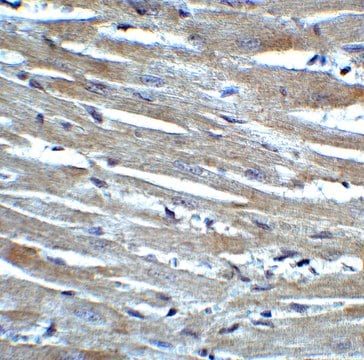추천 제품
생물학적 소스
rabbit
Quality Level
결합
unconjugated
항체 형태
IgG fraction of antiserum
항체 생산 유형
primary antibodies
클론
polyclonal
양식
buffered aqueous solution
분자량
antigen ~50 kDa
종 반응성
human, rat
기술
western blot: suitable
UniProt 수납 번호
배송 상태
dry ice
저장 온도
−20°C
타겟 번역 후 변형
unmodified
유전자 정보
human ... LPAR1(1902)
rat ... Lpar1(116744)
면역원
synthetic peptide corresponding to amino acids 328-344 of human EDG-2/LPA1.
애플리케이션
Anti-LPA1, C-Terminal antibody produced in rabbit is suitable for western blotting at a working dilution of 1:1000 using rat brain microsomal fraction.
생화학적/생리학적 작용
Lysophosphatidic acid receptor 1 (LPA1) is a protein encoded by the LPAR1 gene in humans. It is constitutively localized in the nucleus of mammalian cells and may be involved in regulating intranuclear protein phosphorylation and signalling. LPA1 is differentially expressed in androgen-insensitive and LPA-responsive cells. It is not expressed in androgen-dependent and LPA-resistant cells.Its expression is significantly higher in the cancer compared with the benign tissues and may possibly act as a drug target to interfere with progression of prostate cancer. LPA1 helps in promoting cell proliferation, survival and migration by acting on cognate G protein-coupled receptors.
물리적 형태
Solution in PBS with 0.08% sodium azide
면책조항
Unless otherwise stated in our catalog or other company documentation accompanying the product(s), our products are intended for research use only and are not to be used for any other purpose, which includes but is not limited to, unauthorized commercial uses, in vitro diagnostic uses, ex vivo or in vivo therapeutic uses or any type of consumption or application to humans or animals.
적합한 제품을 찾을 수 없으신가요?
당사의 제품 선택기 도구.을(를) 시도해 보세요.
Storage Class Code
10 - Combustible liquids
Goetzl, E., et al.
Immunology, 162, 2049-2049 (1992)
Rishu Guo et al.
Endocrinology, 147(10), 4883-4892 (2006-07-01)
The bioactive phospholipid lysophosphatidic acid (LPA) promotes cell proliferation, survival, and migration by acting on cognate G protein-coupled receptors named LPA(1), LPA(2), and LPA(3). We profiled gene expression of LPA receptors in androgen-dependent and androgen-insensitive prostate cancer cells and found
Catherine M Waters et al.
The Biochemical journal, 398(1), 55-62 (2006-05-24)
We show that LPA1 (lysophosphatidic acid receptor-1) is constitutively localized in the nucleus of mammalian cells. LPA1 also traffics from cell membranes to the nucleus in response to LPA (lysophosphatidic acid). Several lines of evidence suggest an important role for
N Fukushima et al.
Proceedings of the National Academy of Sciences of the United States of America, 95(11), 6151-6156 (1998-05-30)
Extracellular lysophosphatidic acid (LPA) produces diverse cellular responses in many cell types. Recent reports of several molecularly distinct G protein-coupled receptors have raised the possibility that the responses to LPA stimulation could be mediated by the combination of several uni-functional
E J Goetzl et al.
FASEB journal : official publication of the Federation of American Societies for Experimental Biology, 12(15), 1589-1598 (1998-12-05)
The lysophospholipid (LPL) mediators lysophosphatidic acid (LPA) and sphingosine 1-phosphate (S1P) are generated by enzymatic cleavage of stores of glycerophospholipids and sphingomyelin, respectively, in membranes of stimulated cells. LPLs are albumin bound, distributed widely in mammalian tissues, and increased in
자사의 과학자팀은 생명 과학, 재료 과학, 화학 합성, 크로마토그래피, 분석 및 기타 많은 영역을 포함한 모든 과학 분야에 경험이 있습니다..
고객지원팀으로 연락바랍니다.